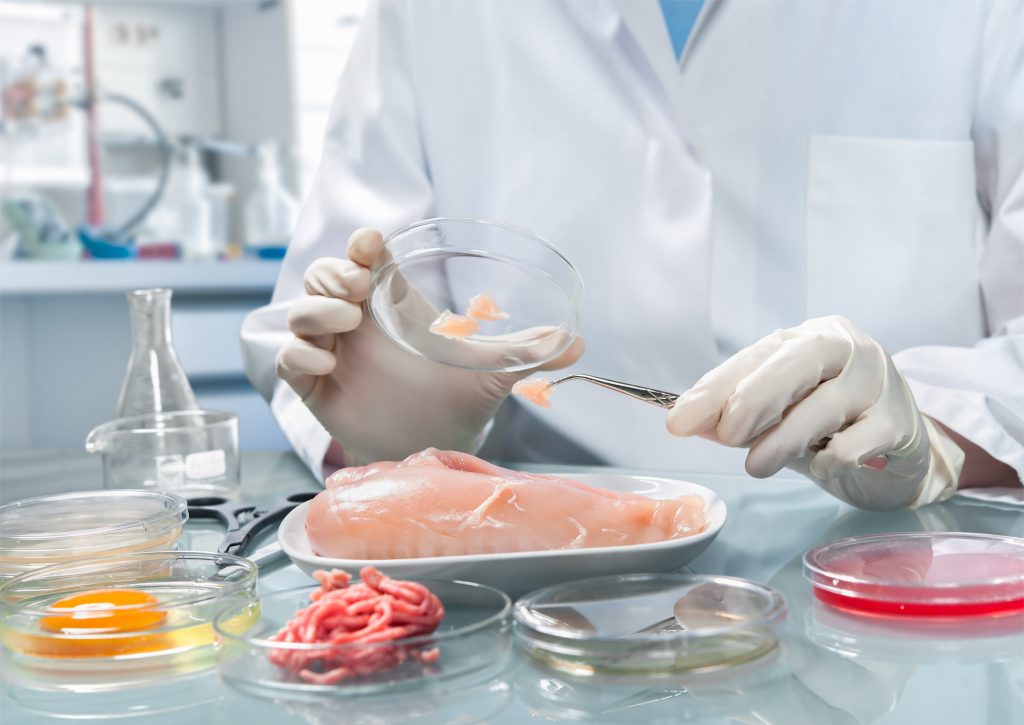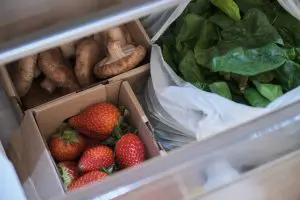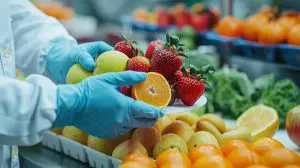The implementation timeline for the newly released SQF scheme for manufacturers is January 2, 2018.
Safe Quality Food Code Edition 8 introduces new, more stringent requirements as well and clarifies existing expectations.
SQF Code: PART A
Part A covers requirements around the implementation and maintenance of the SQF code.
Scope of Certification
The scope of certification must be verified and confirmed by the manufacturer prior to the initial certification audit. Requirements in Edition 8 are clarified, stressing that the certification is site- and product-specific and that exempted products shall not be listed on the certificate or marketed as being included in the scope of certification. Failure to meet this requirement will result in the withdrawal of the SQF certificate.
“The scope of certification forms part of the certificate. It describes the site, the food sector categories (refer Appendix 1) and the products processed and handled on that site. The certificate outlines the location of the site and nature and extent of the supplier SQF certification.”
While areas of the site and elements of the process that are involved with the production, processing and storage of products included in the scope cannot be exempted, the site audit must include a review of the entire site, including the inside and outside of the building, regardless of the scope of certification and agreed exemptions. The objective of this requirement is to ensure that the exempted areas do not constitute a food safety risk. In addition, the site “shall include a review of all operational and cleaning shifts and pre-operational inspections, where applicable.”
Other changes relate to the site audit corrective actions. The close-out timeframe for major and minor non-conformities is now identical: 30 days. An extension may be requested and justification fully documented by the auditor including the temporary measures put in place to ensure food safety.
The SQF certificate is now valid for 75 days beyond the anniversary of the first initial certification audit. Suppliers may also elect to have announced re-certification audits. If successful, a new “SQFI Select Site” recognition will be awarded to these suppliers.
“A site may forgo the three-year certification cycle requirement and voluntarily elect to have annual unannounced re-certification audits. If annual unannounced re-certification audits are conducted by the site then the protocol outlined for the three-year certification cycle audit shall be followed. Sites with annual unannounced recertification audits shall be recognized on the SQF certificate as an ‘SQFI select site’.”
In the event of a withdrawal of the site certification by the certification body, the suppliers “will not be permitted to apply for certification for twelve (12) months from the date the certificate was withdrawn by the SQFI certification body. The withdrawn site will be posted on the SQFI website (sqfi.com) for twelve (12) months.”
Module 2 – System Elements
Management Responsibility
Senior site management responsibility under SQF is now made more robust by the following changes:
- Providing assurance that employees are “informed of their food safety and regulatory responsibilities, [and] are aware of their role in meeting the requirements of the SQF Food Safety Code for Manufacturing”.
- Ensuring the integrity and continued operation of the SQF system during organizational or personnel changes.
- Defining blackout periods for unannounced recertification audits and providing “legitimate business reasons” for these dates.
- Liaising more frequently with the designated SQF practitioner who “shall update senior site management on a (minimum) monthly basis on matters impacting the implementation and maintenance of the SQF system.”
- Ensuring that the management review process includes the following items on the agenda:
“i. The policy manual; ii. Internal and external audit findings; iii. Corrective actions and their investigations and resolution; iv. Customer complaints and their resolution and investigation; v. Hazard and risk management system; and vi. Follow-up action items from previous management review.”
Document Control
The Food safety management system requirements (2.2.1) are now listed under 2.2 Document Control and Records.
Food Legislation
Food legislation requirements have been expanded to include “net weights” and “labeling of identity preserved foods”. Verification activities also stress the documentation of the “legality of the certified products” (2.5.2.2.).
HACCP and Food Safety plans
The Food Safety Plan section (2.4.3) has been edited to provide more detail on how the Codex-based HACCP plan should be developed and hazard analysis conducted. The HACCP plan must be “implemented in full”. Furthermore, manufacturers who sell food for the US market must ensure that their food safety plan meets both Codex and FSMA requirements as identified in section 2.4.3.17:
“Where food safety regulations in the country of production and destination (if known) prescribe a food safety control methodology other than the Codex Alimentarius Commission HACCP guidelines, the food safety team shall implement food safety plans that meet both Codex and food regulatory requirements.”
Food Defense
The SQF code is now requiring that the food defense plan be reviewed and “challenged” at least once a year.
Food Fraud
Food fraud is a new requirement in the code which reflects changes to the GFSI’s guidance document (version 7.1). The supplier is now required to perform a food fraud vulnerability assessment and develop a control plan. The plan must be reviewed a minimum of annually.
“2.4.4.5 The site’s food fraud vulnerability assessment (refer to 2.7.2.1) shall include the site’s susceptibility to raw material or ingredient substitution, mislabeling, dilution and counterfeiting which may adversely impact food safety.
“2.4.4.6 The food fraud mitigation plan (refer to 2.7.2.2) shall include methods by which the identified food safety vulnerabilities from ingredients and materials shall be controlled.”
Vendor Management
Changes in vendor management requirements relate to the credentials of auditors performing supplier audits, as well as the consistency of incoming material specifications for sites under the same corporate ownership.
“2.4.4.7 Raw materials, ingredients, and packaging materials received from other facilities under the same corporate ownership, shall be subject to the same specification requirements (refer to 2.3.2) and approved supplier requirements as all other material providers.”
“2.4.4.9 Supplier audits shall be based on risk and shall be conducted by individuals knowledgeable of applicable regulatory and food safety requirements and trained in auditing techniques.”
Environmental Monitoring
An important requirement of the new SQF code edition is the development of a risk-based environmental monitoring program for all food manufacturing regardless of whether the food is read-to- eat or not. In addition, on-site personnel that conduct environmental testing must participate in an applicable and yearly “proficiency testing program to ensure accuracy of results.”
“2.4.8.1 A risk-based environmental monitoring program shall be in place for all food and pet food manufacturing processes.”
“2.4.8.2 The responsibility and methods for the environmental monitoring program shall be documented and implemented.”
“2.4.8.3 An environmental sampling and testing schedule shall be prepared, detailing the applicable pathogens or indicator organisms to test for that industry, the number of samples to be taken and the frequency of sampling.”
“2.4.8.4 Environmental testing results shall be monitored and corrective actions (refer to 2.5.3.1) implemented where unsatisfactory trends are observed.”
Allergen Management
Allergen management now constitutes a mandatory requirement of SQF edition 8. A register of allergens must be maintained and must reflect the applicable priority allergens in the “country(ies) of destination if known”. Sources of gluten must also be identified and labeled, where applicable. Furthermore, SQF requires that the supplier conduct “an assessment of workplace-related food allergens from locker rooms, vending machines, lunchrooms [and] visitors”. Sites that do not handle allergens must maintain adequate documentation to mitigate the introduction of allergens into the facility:
“2.8.1.11 Sites that do not handle allergenic materials or produce allergenic products shall document, implement and maintain an allergen management program addressing at a minimum the mitigation of introducing unintended allergens through supplier, contract manufacturer, employee and visitor activities.”

Module 11 – Good Manufacturing Practices for Processing of Food Products
Edits and additions to Module 11 requirements are captured below:
Construction of Premises and Equipment
“11.2.3.4 Pipes carrying sanitary waste or waste water that are located directly over product lines or storage areas shall be designed and constructed to prevent the contamination of food, materials, ingredients and food contact surfaces, and shall allow ease of cleaning.”
Inspection/Quality Control Area
“11.2.6.2 The inspection/quality control area shall be provided with facilities that are suitable for examination and testing of the type of product being handled/processed. The inspection area shall: i. Have easy access to hand washing facilities; ii. Have appropriate waste handling and removal; and iii. Be kept clean to prevent product contamination.”
Ventilation
“11.2.8.2 All ventilation equipment and devices in product storage and handling areas shall be adequately cleaned as per 11.2.12, to prevent unsanitary conditions.”
Equipment, Utensils and Protective Clothing
“11.2.9.1 Specifications for equipment, utensils and protective clothing, and procedures for purchasing equipment shall be documented and implemented.”
“11.2.9.8 All equipment, utensils and protective clothing shall be cleaned after use or at a frequency to control contamination, and stored in a clean and serviceable condition to prevent microbiological or cross-contact allergen contamination.”
Pest Prevention
“ 11.2.12.2 Identified pest activity shall not present a risk of contamination to food products, raw materials or packaging.”
“ 11.2.12.3 Food products, raw materials or packaging that are found to be contaminated by pest activity shall be effectively disposed of, and the source of pest infestation investigated and resolved. Records shall be kept of the disposal, investigation, and resolution.”
Cleaning and Sanitation
“11.2.13.4 Cleaning in place (CIP) systems where used shall not pose a chemical contamination risk to raw materials, ingredients or product. CIP parameters critical to assuring effective cleaning shall be defined, monitored and recorded (e.g., chemical and concentration used, contact time and temperature). CIP equipment including spray balls shall be maintained and modifications to CIP equipment shall be validated. Personnel engaged in CIP activities shall be effectively trained.”
“11.2.13.8 Detergents and sanitizers shall be suitable for use in a food manufacturing environment, labelled according to regulatory requirements, and purchased in accordance with applicable legislation. The organization shall ensure: i. The site maintains a list of chemicals approved for use; ii. An inventory of all chemicals purchased and used shall be maintained; iii. Detergents and sanitizers are stored as outlined in element 11.6.4; iv. Safety Data Sheets (SDS) are provided for all detergents and sanitizers purchased; and v. Only trained staff handles sanitizers and detergents.”
“11.2.13.9 Detergents and sanitizers that have been mixed for use shall be correctly mixed according to manufacturers’ instructions, stored in containers that are suitable for use, and clearly identified. Mix concentrations shall be verified and records maintained.”
Personnel
“11.3.1.2 The site shall have measures in place to prevent contact of materials, ingredients, food packaging, food, or food contact surfaces from any bodily fluids from open wounds, coughing, sneezing, spitting, or any other means.”
“11.3.1.4 Smoking, chewing, eating, or spitting is not permitted in areas where product is produced, stored, or otherwise exposed. Drinking of water is permissible only under conditions that prevent contamination or other food safety risks from occurring. Drinking water containers in production and storage areas shall be stored in clear, covered containers, and in designated areas away from raw materials, packaging or equipment.”
Handwashing
“11.3.2.5 Personnel shall have clean hands and hands shall be washed by all personnel, including staff, contractors and visitors: i. On entering food handling or processing areas; ii. After each visit to a toilet; iii. After using a handkerchief; iv. After smoking, eating or drinking; and v. After handling wash down hoses, dropped product or contaminated material.”
Clothing
“11.3.3.1 The site shall undertake a risk analysis to ensure that the clothing and hair policy protects materials, food and food contact surfaces from unintentional microbiological or physical contamination.”
Sanitary facilities
“11.3.9.1 Toilet rooms shall be: i. Designed and constructed so that they are accessible to staff and separate from any processing and food handling operations; ii. Accessed from the processing area via an airlock vented to the exterior or through an adjoining room; iii. Sufficient in number for the maximum number of staff; iv. Constructed so that they can be easily cleaned and maintained; v. Include an area inside or nearby, for storing protective clothing, outer garments and other items while using the facilities; and vi. Kept clean and tidy.”
Lunchrooms
“11.3.10.3 Where outside eating areas are provided, they should be kept clean and free from waste materials and maintained in a manner that minimizes the potential for introduction of contamination including pests to the site.”
Staff Engaged in Food handling and Processing Operations
“11.4.1.1 All personnel engaged in any food handling, preparation or processing operations shall ensure that products and materials are handled and stored in such a way as to prevent damage or product contamination. They shall comply with the following processing practices: i. Personnel entry to processing areas shall be through the personnel access doors only; ii. All doors are to be kept closed. Doors shall not be left open for extended periods when access for waste removal or receiving of product/ingredient/packaging is required; iii. Packaging material, product, and ingredients shall be kept in appropriate containers as required and off the floor; iv. Waste shall be contained in the bins identified for this purpose and removed from the processing area on a regular basis and not left to accumulate; v. Staff shall not eat or taste any product being processed in the food handling/contact zone, except as noted in element 11.4.1.2;
- The wearing of false fingernails, false eyelashes, eyelash extensions, long nails or fingernail polish is not permitted when handling exposed food; vii. Hair restraints are used where product is exposed.”
Monitoring Water Microbiology Quality
“11.5.4.1 Water shall comply with local, national or internationally recognized potable water microbiological and quality standards as required when used for i. washing, thawing and treating food; ii. handwashing iii. to convey food; iv. as an ingredient or food processing aid; v. cleaning food contact surfaces and equipment; vi. the manufacture of ice; or vii. the manufacture of steam that will come into contact with food or used to heat water that will come in contact with food.”
Quality of Air and Other Gasses
“11.5.5.1 Compressed air or other gasses (e.g. nitrogen, carbon dioxide) that contacts food or food contact surfaces shall be clean and present no risk to food safety. ”
“11.5.5.2 Compressed air systems, and systems used to store or dispense other gasses used in the manufacturing process that come into contact with food or food contact surfaces shall be maintained and regularly monitored for quality and applicable food safety hazards.”
Loading
“11.6.6.3 Vehicles (e.g. trucks/vans/containers) shall be secured from tampering using a seal or other agreed upon, acceptable device or system.”
Control of Foreign Material Contamination
“11.7.5.9 Knives and cutting instruments used in processing and packaging operations shall be controlled, and kept clean and well maintained. Snap-off blades shall not be used in manufacturing or storage areas.”
On-site Laboratories
“11.8.1.1 On site laboratories conducting chemical and microbiological analysis that may pose a risk to product safety, shall be located separate from any food processing or handling activity and designed to limit access only to authorized personnel.”
Waste Disposal
“11.9.1.5 Where applicable, a documented procedure shall be in place for the controlled disposal of trademarked materials. Where a contracted disposal service is used, the disposal process shall be reviewed regularly to confirm compliance.”
“11.9.1.6 Inedible waste designated for animal feed shall be stored and handled so as to not cause a risk to the animal or to further processing.”
“11.9.1.7 Waste held on site prior to disposal shall be stored in a separate storage facility and suitably insect proofed and contained so as not to present a hazard.”
Exterior
“11.10.1.1 Measures shall be established to maintain a suitable external environment, and the effectiveness of the established measures shall be monitored and periodically reviewed.”
“11.10.1.4 Paths, roadways, loading and unloading areas shall be adequately drained to prevent ponding of water. Drains shall be separate from the site drainage system and regularly cleared of debris.”





